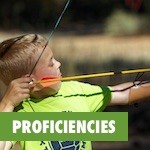Two examples of implementing proficiency-based scales of learning
 Vermont educators and their students are on a journey. Let’s look at how one school is implementing proficiency-based learning in a way that ensures all learners have the opportunity to thrive.
Vermont educators and their students are on a journey. Let’s look at how one school is implementing proficiency-based learning in a way that ensures all learners have the opportunity to thrive.
When we clearly articulate learning targets both for and with learners, the end is clear to all and learning can proceed along a progression with multiple opportunities for demonstrating growth and mastery.
Who better than Vermont students to tell the story of Proficiency-Based Learning?
Narrated by Vermont students Anneka Williams and Sam Houlihan, this 7-minute video makes a strong case for transforming schools through Proficiency-Based Learning:
[vimeo 180438476 w=640 h=360]
This short piece from the Great Schools Partnership details four key defining concepts of Proficiency-Based Learning to clarify any misunderstandings, unpack assumptions, and be certain all included in this work share a common understanding. Helpful in looking for common ground to start from!
Proficiencies in action at Peoples Academy
At the 3:45 mark in the video, Williams provides a concrete example of a student meeting proficiency in Global Citizenship. Models are invaluable to me as a learner. If this too is the case for you, here’s how teachers at Peoples Academy Middle School, in Morrisville, Vermont, are making clear to students what they need to know, understand, and do to meet targeted proficiencies using learning scales as instructional tools.
Targeting fluency:
Phoebe Slater, a literacy specialist at Peoples, crafted a relevant, authentic learning experience using targets and scales to help her students improve their fluency and reading comprehension, with multiple opportunities to demonstrate proficiency in this important skill. These students found ample motivation and a audience of listeners to demonstrate proficiency in fluency at the local radio station. See how she crafted this engaging learning opportunity:
[youtube https://www.youtube.com/watch?v=EsLdeEtMQjU]
Team collaboration targeting both content and transferable skills:
The 5th & 6th grade teachers built an integrated unit called Science Palooza using both content-specific and transferable skills scales and how their students used these scales to reflect on their growth.
Notice how these students are partners in assessment as they take responsibility of demonstrating clear evidence of growth aligned to the learning targets.
[youtube https://www.youtube.com/watch?v=oOsL9mQc8gA]
A nod to the why of Proficiency-Based Learning:
Robert Marzano points to the proven benefits of the strategy of students tracking their own progress on assessments:
“When it comes to using classroom assessment to enhance student achievement, having students track their progress using rubrics is a hidden gem. This strategy involves multiple types of assessments, increases interactions between teachers and students, and provides students with clear guidance on how to enhance their learning.”
Students must become partners in assessment if we want to see all of our hard work succeed. These examples illustrate two ways of using scales with students to target practice.


Comments are closed.